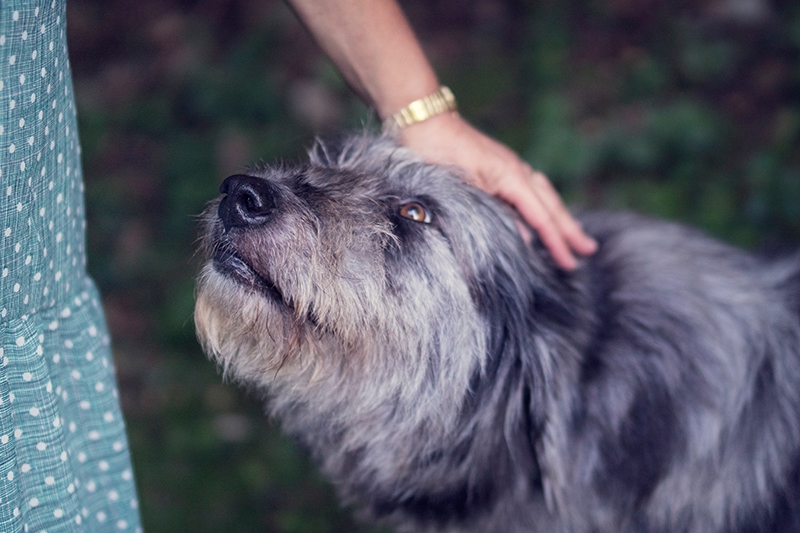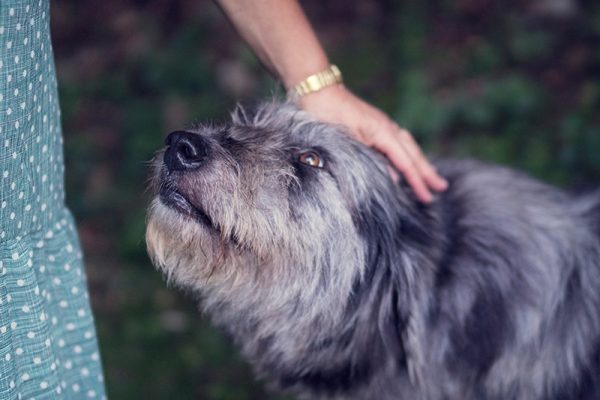Most dog parents love to cuddle with their dogs and pet them as a sign of love and affection. This activity feels good to humans and makes them more connected to their dogs. Petting also feels good to dogs, which is why it’s believed that it can even reduce stress.
But is that true? Will your dog be less stressed and anxious if you pet them? The short answer is yes; as long as your dog likes to be petted, petting will reduce stress in your dog. However, if your dog does not like to be petted, forcing them will cause further stress.
Read on to learn everything about stress in dogs, how petting affects a stressed dog, and other methods that you can use to reduce stress in your canine.

What Triggers Stress in Dogs?
Dogs can become stressed due to various reasons1, though it mostly happens because of boredom, anxiety, fear, and frustration. Many dogs will also become stressed if they don’t live in proper conditions and get adequate care. Dogs commonly get stressed when their owners are stressed or nervous.
Your dog could even experience stress if there have been major alterations in your routine or environment. Remember that big changes, such as moving, getting a new pet, or introducing a new family member, could all potentially be stressful for your dog.
Therefore, you should know what causes stress in your dog and learn the things that you can do to reduce their stress levels.
Common Signs of Stress in Your Dog
Dogs can easily become stressed, which can negatively impact their health. So, you should do everything that you can to reduce stressful situations for your dog.
But how can you recognize that your dog is stressed? There are multiple signs that your dog might exhibit when under stress, from growling to hiding or trying to escape.
Here’s a list of the most common signs2:
- Growling
- Pacing
- Shaking
- Whining
- Barking
- Drooling
- Yawning
- Licking
- Making eye and ear changes
- Panting
- Changing body posture
- Avoiding people and/or places
- Exhibiting displacement behavior
- Hiding
- Exhibiting escape behavior
- Having an increased heart rate
- Acting depressed
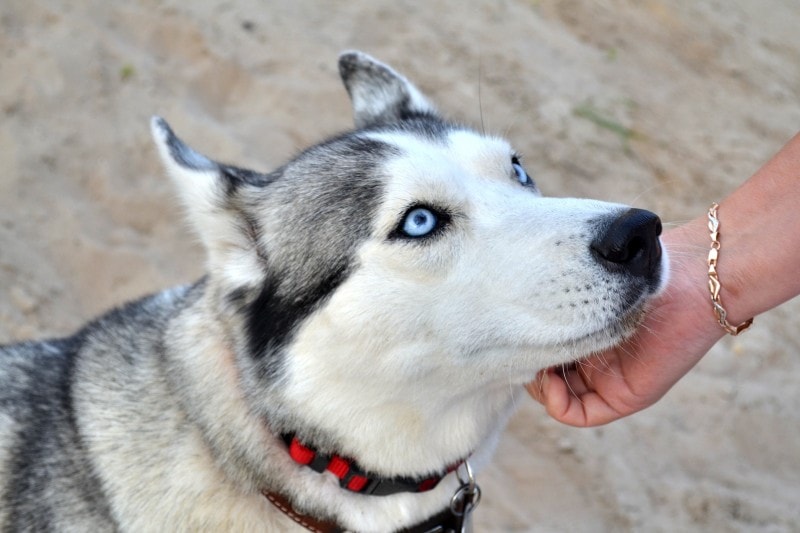
How Can Stress Affect Your Dog?
Each dog reacts differently to stress, so not all dogs will exhibit the same behaviors. However, the signs of stress in dogs are similar for all canines; most will change their body language, shake, yawn, or even bark or growl excessively.
While a bit of stress now and then is normal for humans and animals, including dogs, too much stress in your dog could lead to various problems, such as anxiety, phobias, and fear3.
Will Petting Reduce Stress in Your Dog?
Yes! Per research, as long as the dog consents to it, petting reduces the stress hormone cortisol in dogs, and the social interaction between you and the dog increases their oxytocin levels. Petting is also beneficial for humans in the same way, which is why many PTSD patients get service dogs as companions.
Petting reduces your dog’s blood pressure, making them calmer and more relaxed. It also boosts your and your dog’s overall health while reducing loneliness and depression.
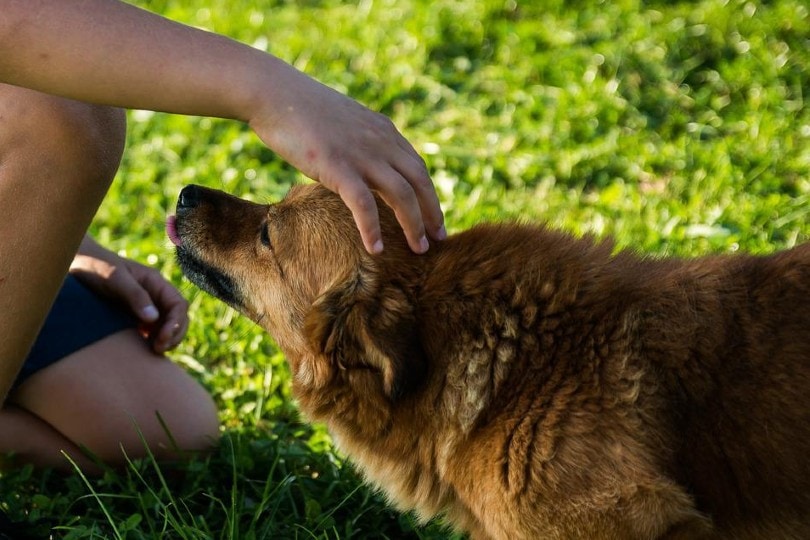
Where to Touch a Dog to Reduce Their Stress
Typically, any type of touch during a stressful episode will be beneficial for your canine. However, different touch options can help calm dogs quickly and easily. Here’s a list of a few actions that are not regular petting but can reduce stress in your furry friend:
- Ear touch — Most dogs like it when you touch their ears, and this activity is also excellent when you want to reduce stress in your dog. Gently sliding your thumb over your dog’s ear base to the tip will allow your dog to relax.
- Body wrap — This technique includes putting a bandana or a scarf on your dog’s body. By wrapping a scarf that has your scent around your dog, they will be able to relax and be less nervous.
How Should You Pet a Dog?
When petting your dog, there are a few things to consider to avoid possible problems. Most dogs prefer being pet on specific parts of their body, such as the:
- Chest
- Shoulders
- Tail base
Although these are the most common petting areas, individual dogs can have other special areas where they like to be pet.
If you’re petting your own dog, you can try lightly touching multiple areas to see what feels good for your dog. However, if you’re petting a stray dog, you should be cautious and do it carefully. Here’s a list of steps to follow to successfully pet a stray dog without causing fear or stress:
- Say encouraging words to the dog.
- Slowly put out your hand and allow the dog to sniff it.
- Slowly stroke one part of the dog’s body while following their reaction.
- If the dog reacts positively, you can continue your petting session.
Also, petting is an excellent award during dog training because it’s connected with praise and positive reinforcement.
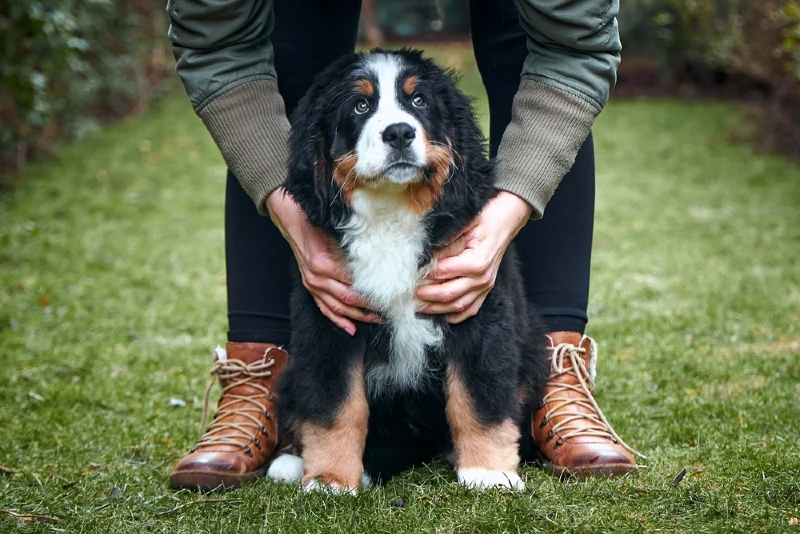
Can My Dog Get Overstimulated From Petting?
Yes, your dog can become overstimulated by petting, especially if your petting is enthusiastic rather than calming, as they can experience sensory overload. This can become a severe issue, and it affects each dog differently, depending on their personality.
- Panting
- Rapid heartbeat
- Biting
- Lip licking
- Yawning
- Enlarged pupils
- Poor impulse control
- No blinking
- Hypervigilance
- Hiding or trying to run away
- Excitability
- Anxiousness
- Compulsive behaviors
Since petting can lead to sensory overload, you should always be careful about how and when you pet your dog, especially if they’re already stressed out. Occasionally look for signs of overstimulation, so you can prevent further problems with your canine friend.
Other Ways That You Can Reduce Stress in Your Dog
If petting doesn’t work for your dog and they still seem irritated, you might need to try other methods to reduce their stress. Here’s a list of the best ways (besides petting) to ease your dog’s stress:
- Give your dog alone time — When your dog is stressed and petting isn’t working, simply allow your dog to be alone. Your canine may be overstimulated and need peace and quiet to calm down.
- Exercise with your dog — Exercise is a great way to reduce stress and discharge negative energy. It will allow your dog to run, become active, and be more playful.
- Entertain your dog — You can entertain your dog by offering games and fun activities to reduce stress. If your dog is active, they’re less likely to experience stress and unwanted behaviors.
- Stay calm and relaxed — Dogs tend to pick up on our emotions, so if you notice that your dog is stressed, you need to remain relaxed yourself. That way, your dog will feel your emotions and calm down because you’re also calm.
Final Words
Petting your dog is extremely beneficial, both for you and your dog. It’s been scientifically proven that petting will reduce stress in most dogs and increase their “happy hormone” levels. Simultaneously, petting can have the same positive effect on you, reducing your stress and making you happier.
Overall, petting is an excellent way to bond with your canine, show them love, and reduce their and your stress levels as necessary.
Featured Image Credit: Jumpstory

